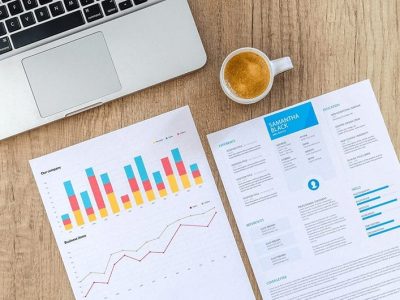
Understand Line of Credit Highlights
What is, and why use a business line of credit?
Lines of credit can be very useful tools for a business if used properly. This financing can have many advantages for a new or established business. Funding from credit lines can be used for expansion, managing cash flow, getting better rates from vendors.
But this type of financing can create significant problems when it is used as a band-aid that may allow management to ignore structural problems in the business.
A business term loan can be a good type of financing to compare against.

Credit lines and how they are different from a business loan?
Business loans are typically given by your bank, but today it is possible to get them from a wide range of sources. The main difference from a business loan and a line of credit is how the funds are dispersed and the method of repayment.
When applying and accepted to receive financing, the entire amount of the loan will be dispersed when the application is accepted. At which point your repayment schedule begins. Upon signing for the loan you will, as a rule, get a fixed interest rate for the term of the loan.
A line of credit has a number of significant differences to the standard business loan. In a standard business loan all of the funds are dispersed and repayment begins.
With a line of credit financing you are given the right to use up to a specified amount, but if you don’t use it you’re not responsible for any repayment. This can be a significant advantage to your business if you know your cash cycle is prone to peaks and valleys.
Other key differences to a business loan and a credit line are the fees paid. Typically a business loan will have an origination fee and then fixed interest rates for the life of the loan.
Lines of credit often have a variable interest rate, and will also require an origination or set up fee. Added to these fees will be some account maintenance charges that are required to keep the account open, if the funds are used or not.

Why would I get a line of credit?
The main reason many businesses go for a line of credit is to manage cash flow.
Positives to the credit line are:
- Only make a payment if you’ve used the funds,
- Pay only the interest on the amount you have accessed.
- Repaying the funds by the end of the period you borrowed them in, may incur no interest is charged.
A typical example is a business that works with the government. The government is required to pay with 30 days after:
- A proper invoice was received by the designated billing office.
- A receiving report or other government documentation authorizing payment was processed, and there was no disagreement over quantity, quality or compliance by the contractor with any contract term or condition.
- The amount due was not subject to further contract settlement actions between the government and the contractor
If any of these things are wrong it will restart the clock.
This means that until invoice is correct, accepted and paid, the business is out the cost of materials and labor. This may mean you don’t have enough cash to continue work on other projects.
This is the perfect case for a line of credit, anytime the business is forced to wait on payment from a customer, but has to put out expenses in the form of labor and or materials you have to cover this without the payment from the customer. The line of credit gets you over that hump so that you can keep on working.

Two Main Types of Lines of Credit
The secured business line of credit.
Using this type of financing requires that the business must pledge assets as collateral to secure the line of credit.
The types of collateral needed vary with the term of the credit line. Given that most lines of credit are for short term needs the assets needed to secure it tend to be short term also.
Examples of assets that can secure the line of credit are:
- inventory
- accounts receivable
- equipment.
In general property/real estate is not used.
Advantages to a secured line is the rates and fees tend to be lower. They can also be used if your company does not have the credit rating to get an unsecured line.
Unsecured lines of credit
Using the line of credit unsecured financing is approved without a need to secure it with any asset.
The institution providing the line of credit reviews the company’s financials and reasons for using the line of credit. This type of credit line can have a higher rate or fee associated with it, but this is not always true.
Given that the business must have solid cash flow, a good credit history they tend to represent a lower risk so institutions will sometimes provide lines of credit with the same or lower rates than secured lines of credit.
An unsecured line of credit is preferable because there tends to be less paperwork, none of the company’s assets are encumbered and the funds can be accessed sooner.
Make sure to review short term loans as a alternative form of financing.

How A Business Line of Credit Works
- Identify the institution that will provide the line of credit, then submit an application.
- Once the application is approved, the institution will provide you with the information you’ll need to access the funds.
- When cash is needed it is as simple as transferring money from one account to another. Once a transfer has been requested, you’ll be notified that the transfer was complete and funds can be accessed. At this point a email or message will be transmitted listing the minimum payments needed.
- Interest payments on what has been received will start right away, but every payment you make will add back to the amount you’re able to access up to the credit limit.
Getting the limit raised is easier once approved and the credit line has been used with regular payments.
Who offers business lines of credit financing?
Local banks are where many small businesses start the process. This is not a bad idea as they know you and you know them.
Banks often can have more stringent requirements than some other options.
If you can meet their requirements this can mean lower interest rates and fees if you are also doing your banking with them.
Local banks not an option there are a myriad of other options, that include local brick and mortar to on line.
These institutions can be banks, but there are many other types that focus on just lines of credit or provide lines of credit and other financial products.


Line of credit vs loan, what is the best?
The short answer is, it depends.
It depends on your situation and what you need the financing for. As a general rule if you need it for long term expansion plans, property, equipment then the best option is a business loan with a fixed interest rate and payment schedule.
If you are needing cash to make ends meet, during spikes in the business cycle, or dealing with long payment terms from your customers then the credit line is the best. This is especially true if you will not need to use the entire line up to the authorized limit..
Business Line of Credit Frequently Asked Questions
Can line of credit be used for down payment ?
In most cases the answer is yes. Once you have the line of credit what you do with the funds is up to you. If it is for a down payment on equipment or something else, consideration should be give to what the ROI is on the new asset.
If you are using the down payment for a loan then your credit profile will still have to support the loan repayment
Will line of credit financing affect mortgage ?
These are treated independently, but if you are attempting to get a mortgage and you have a personal line of credit it will not affect it except for the portion that is used. If you have accessed the funds then these will be treated like any other debt and be added to your debt load to determine if you can payback the loan.
Are lines of credit loans good ?
Yes and no, it really depends on what the funds will be used for. If you have a line of credit just as protection in case sales or receivables don’t come in as expected then they can be very useful.
If on the other hand you are using the line of credit to buy a boat a non performing asset, or to put a bandaid on poor business management, then all the line will do is dig the hole deeper and make it harder to get out.
Which line of credit is best ?
Secured or unsecured lines of credit are the two types and which of these is best depends on your situation. If you have poor credit, your cash flow is very unstable, or you’ve only been in business a short time you may only be able to get a secured credit line. If you have access to both, and the rates are the same, then using the unsecured is best because your assets are not encumbered in any way.
